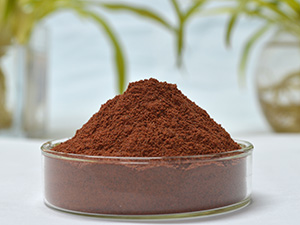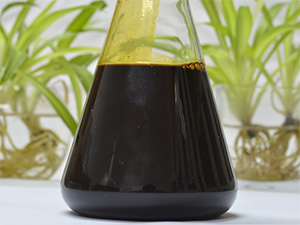Where to buy Cinnamon Extract with lowering Cinnamon Extract price and high quality? As the professional Cinnamon Extract suppliers,Plamed is your best choice. Cinnamon extract comes from the bark of Cassia Cinnamon by processing it in water and alcohol solution. Cinnamon Polyphenols, Proanthocyanidins and Flavonoids are considered as its active ingredients. They have potent antioxidant property. Scientific research has revealed that polyphenols in cinnamon bark can help maintain the body’s ability to metabolize glucose in a healthy way. It is widely used in medicine or functional food to help diabetic people regulate blood sugar, especially in Europe and America.
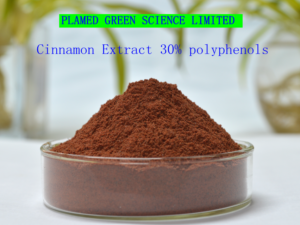
Cinnamon plants have oval-lanceolate, rough-textured leaves approximately 7 to 20 cm in length. There are mainly two types of cinnamon, Cinnamomum verum, or C. zeylandicum or Ceylon cinnamon, which is considered the real cinnamon, and Cinnamomum cassia, or Chinese cinnamon. Harvesters usually cut the inner bark of the tree into the curled “sticks” which you can find in markets, and the bark can also be ground up into powder. With a sweet but pungent taste, cinnamon bark is one of the world’s favorite spices. What’s more, it has been used in traditional Chinese medicine to support proper digestion for more than 4,000 years.
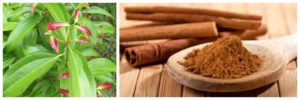
| Cinnamon extract | Product name | Specification |
| Cinnamon Polyphenols | 10%, 20%, 25% UV | |
| Cinnamon Proanthocyanidins | 70% UV | |
| Cinnamon Flavonoids | 8%, 10%, 20% UV |
| ANALYSIS | SPECIFICATION |
| Cinnamon Polyphenols | 10%, 20%, 25% |
| Cinnamon Proanthocyanidins | 70% |
| Cinnamon Flavonoids | 8%, 10%, 20% |
| Test Method | UV |
| Organoleptic | |
| Appearance | Fine Powder |
| Color | Yellow Brown |
| Odor | Characteristic |
| Taste | Characteristic |
| Part Used | Bark |
| Extraction Solvent | Ethanol & Water |
| Physical Characteristics | |
| Particle Size | 100% Through 80 mesh |
| Loss on drying | ≤5.00% |
| Ash Content | ≤5.00% |
| Heavy Metals | |
| Total Heavy Metals | ≤10PPM |
| As | ≤2PPM |
| Pb | ≤2PPM |
| Microbiological Tests | |
| Total Plate Count | ≤1000cfu/g |
| Total Yeast & Mold | ≤100cfu/g |
| E.Coli | Negative |
| Salmonella | Negative |
| Staphylococcus | Negative |
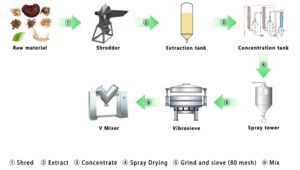
-
Lowering blood sugar
Cinnamon is frequently treated as an anti-diabetic compound, since it reduces the rate at which glucose enters the body. Cinnamon exerts its beneficial control effects in a number of ways.
Cinnamon can inhibit numerous digestive enzymes, such as alpha-glucosidase, sucrase and potentially pancreatic amylase. Via inhibition of these enzymes, cinnamon can decrease the absorption of glucose into systemic circulation and avoid overly significant insulin spikes.
In systemic circulation (beyond the liver) cinnamon also possesses anti-diabetic effects. A special group of compounds in cinnamon, Methyl Hydroxy Chalcone polymers (MHCPs), activate key enzymes that increase insulin sensitivity by stimulating their receptors, and inhibit the enzymes that deactivate their function.
-
Antioxidant
Cinnamon extracts appear to exhibit antioxidant action. In an experiment to determine the wound healing action of an ethanol extract of cinnamon, researchers suggested the significant increase in wound healing was attributable to the antioxidant activity demonstrated.

-
Soothe an upset stomach
Cinnamon extracts have been used medically to treat gastrointestinal problems and to help calm the stomach. Cinnamon is a carminative, an agent that helps break up intestinal gas that has traditionally been used to combat diarrhea and morning sickness. Both test-tube and some animal studies have found that cinnamon may help to relieve mild abdominal discomfort caused by excess gas. It is used in flatulent dyspepsia, dyspepsia with nausea, intestinal colic and digestive atony associated with cold & debilitated conditions. It is known to relieve nausea and vomiting, and because of its mild astringency it is particularly used for infantile diarrhea.
-
Relieve Colds and Flu
In both India and Europe, cinnamon has been traditionally taken as a warming herb for “cold” conditions, often in combination with ginger (Zingiber officinale). The herb stimulates circulation, especially to the fingers and toes and has been used for arthritis. Cinnamon is also a traditional remedy for aching muscles and other symptoms of viral conditions such as colds and flu.
Based on Chinese Pharmacopoeia and scientific research, we recommend the following dosage for anti-diabetic purposes. Take it with meals in forms of capsules or tablets. If preferred, the powder can be added to beverages and food such as tea, coffee, hot chocolate, cereal, or oatmeal.
| Specification | Recommended dosage |
| 10% Cinnamon Polyphenols | 500-3000mg/day |
| 20% Cinnamon Polyphenols | 250-1500mg/day |
| 30% Cinnamon Polyphenols | 150-1000mg/day |
Mainly used in medicine and dietary supplements to support healthy sugar metabolism and stomach health.
|
Application |
Form | Purpose |
| Medical and health industry |
Medicine; Dietary supplements |
Lowering blood sugar; Warming; Calming stomach |
| Food industry | Powder drink |
Lowering blood sugar; Warming; Calming stomach |


Cassia cinnamon contains varying amounts of a chemical called coumarin, which might cause or worsen liver disease. In most cases, cassia cinnamon doesn’t have enough coumarin to make you sick. However, for some people, such as those with liver disease, taking a large amount of cassia cinnamon might worsen their condition.
Packed in 25kg paper drums with two plastic bags inside.
Please store in well closed containers away from moisture and heat.

Rae Wong
Tel: +86-29-8821 5350
Mobile: +86 180 6683 3765
Email: sale@plamed.cn
Whatsapp: +86 180 6683 3765
Skype: plamed06
Wechat: 18066833765


